-

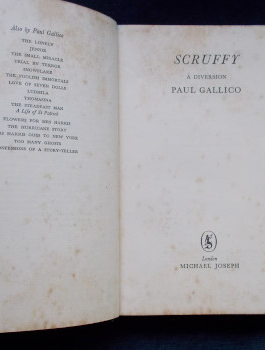 A hilarious fictional account of the infamous apes of Gibraltar during World War Two. Based on the ancient legend that when the Rock Apes die out, the British will lose Gibraltar, so deep-rooted is this belief that in 1944 Winston Churchill actually caused a signal to be sent to Gibraltar expressing anxiety over rumours concerning the apes and directing that every effort must be made to restore their dwindling number. On Gibraltar, Gunner Lovejoy and Captain Bailey are in charge of looking after the apes and Bailey drives the Brigadier up the wall with requests and suggestions for bettering the care of the apes. Between that and the mischief of Scruffy, Alpha ape - who goes in for wig theft, smashing tiled roofs, pooping in the town's water supply - Bailey is transferred, the apes are neglected and population begins to dwindle. Then the Germans get hold of the news and the legend - and begin using it for propaganda!
A hilarious fictional account of the infamous apes of Gibraltar during World War Two. Based on the ancient legend that when the Rock Apes die out, the British will lose Gibraltar, so deep-rooted is this belief that in 1944 Winston Churchill actually caused a signal to be sent to Gibraltar expressing anxiety over rumours concerning the apes and directing that every effort must be made to restore their dwindling number. On Gibraltar, Gunner Lovejoy and Captain Bailey are in charge of looking after the apes and Bailey drives the Brigadier up the wall with requests and suggestions for bettering the care of the apes. Between that and the mischief of Scruffy, Alpha ape - who goes in for wig theft, smashing tiled roofs, pooping in the town's water supply - Bailey is transferred, the apes are neglected and population begins to dwindle. Then the Germans get hold of the news and the legend - and begin using it for propaganda! -
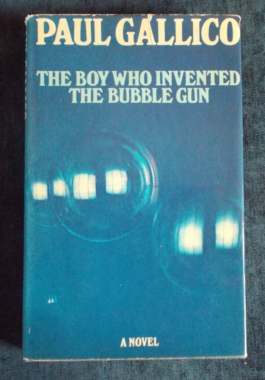 Gallico makes a return to his earlier style - the small boy armoured in innocence and faith, as made famous by The Small Miracle. The odyssey of nine-year-old Julian West leads him across the country from San Diego, California to Washington on a lonely and courageous venture to patent his invention. He meets a man who offers him help and companionship - at a price. But like Christian in Bunyan's A Pilgrim's Progress, Julian knows not friend or enemy, but marches steadily through a series of fantastic situations and all-too-real dangers. If these perils are conquered by innocence when Julian's private world is shattered at the end of the Journey, Julian is ready - for he is no longer a child.
Gallico makes a return to his earlier style - the small boy armoured in innocence and faith, as made famous by The Small Miracle. The odyssey of nine-year-old Julian West leads him across the country from San Diego, California to Washington on a lonely and courageous venture to patent his invention. He meets a man who offers him help and companionship - at a price. But like Christian in Bunyan's A Pilgrim's Progress, Julian knows not friend or enemy, but marches steadily through a series of fantastic situations and all-too-real dangers. If these perils are conquered by innocence when Julian's private world is shattered at the end of the Journey, Julian is ready - for he is no longer a child. -
 A bizarre and frightening use of psychic phenomena as a weapon in the Cold War. An ingenious story, complete with mountebanks and conmen - and the real thing. Professor Constable is convinced that he is in touch with his dead daughter through a medium. The evidence is a cast of a hand, with the fingerprints of the dead girl in it. Alexander Hero, top operative of the So You Think You’ve Seen a Ghost Society of Great Britain, is hired to investigate a medium and her husband who may be trying to sway the Professor to sell his secrets to the Russians. Hero's job is to find out and debunk how they created Mary's hand - after she had been cremated...
A bizarre and frightening use of psychic phenomena as a weapon in the Cold War. An ingenious story, complete with mountebanks and conmen - and the real thing. Professor Constable is convinced that he is in touch with his dead daughter through a medium. The evidence is a cast of a hand, with the fingerprints of the dead girl in it. Alexander Hero, top operative of the So You Think You’ve Seen a Ghost Society of Great Britain, is hired to investigate a medium and her husband who may be trying to sway the Professor to sell his secrets to the Russians. Hero's job is to find out and debunk how they created Mary's hand - after she had been cremated... -
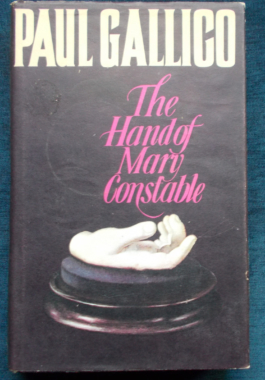 Professor Constable's only daughter was dead of leukaemia at the age of ten. Constable, a world famous scientist, was convinced that she was in communication with him beyond the grave. Were the 'spirit manifestations' of Mary Constable a depraved and cunning confidence game? Or were they as they appeared to be - genuine? AS Constable was a key Government scientist working on a project of world-shaking importance, Washington sent Alexander Hero, chief investigator for the British Society for Psychical Research. Working against time, Hero sees the evidence that had convinced the Professor - a translucent, hollow, seamless wax hand, complete with identifiable finger prints - the hand of Mary Constable. With each passing hour, the spirit of Mary seemed to be literally sapping her father's will, driving him to abandon work on Operation Foxglove, vital to the defence of the West. Alone in New York, surrounded by officials who regarded him with suspicion, Hero had to expose the spirit-daughter as a diabolical hoax. Suddenly he found an ally - a beautiful girl as well-versed in professional magic as Hero was in psychic phenomena. Hero had only seconds to decide - and the wrong decision would cost him his life.
Professor Constable's only daughter was dead of leukaemia at the age of ten. Constable, a world famous scientist, was convinced that she was in communication with him beyond the grave. Were the 'spirit manifestations' of Mary Constable a depraved and cunning confidence game? Or were they as they appeared to be - genuine? AS Constable was a key Government scientist working on a project of world-shaking importance, Washington sent Alexander Hero, chief investigator for the British Society for Psychical Research. Working against time, Hero sees the evidence that had convinced the Professor - a translucent, hollow, seamless wax hand, complete with identifiable finger prints - the hand of Mary Constable. With each passing hour, the spirit of Mary seemed to be literally sapping her father's will, driving him to abandon work on Operation Foxglove, vital to the defence of the West. Alone in New York, surrounded by officials who regarded him with suspicion, Hero had to expose the spirit-daughter as a diabolical hoax. Suddenly he found an ally - a beautiful girl as well-versed in professional magic as Hero was in psychic phenomena. Hero had only seconds to decide - and the wrong decision would cost him his life. -
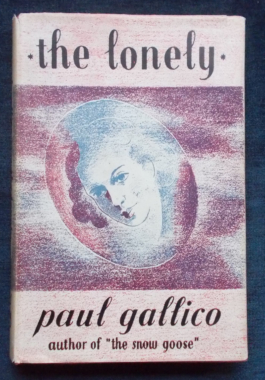
The Lonely: Paul Gallico
$15.00A tale of two lonely souls trying to reach out to one of their kind in order to feel completeness. Jerry, a much-loved only child, grows up in Long Island and is happy to marry his childhood sweetheart. But the Second World War intervenes and he is stationed in England, far from home. About to go on furlough to Scotland, he invites Patches, a WAAF - no strings attached, they have a wonderful time, and part with a handshake as agreed. He finds that what he feels for Patches is real - but will they ever see each other again? On his journey from boy to man, he realizes that there's more to it than growing a dashing moustache or going with girls. Once he returns home, he struggles, realising that he loves Patches, that his parents and his fiancee have invested so much in the plans they had made for a future - and they have no way of understanding that his experiences in both love and war have changed him for life. The emotional turmoil which each character undergoes has been written brilliantly and makes the book worth reading. In spite of its slow pace, there is never a dull moment. For each action that is taken, a justification is given, which makes it even more difficult for the reader to decide what can be the end of the story. A most vivid description of the characters and their thoughts makes the reader literally go under the skin of each and relive their moments time and again. -
 At the height of its New Year revels, luxury ocean liner Poseidon is capsized by a massive tidal wave caused by an undersea earthquake. A handful of survivors must fight for their lives against appalling odds, struggling through the entrails of the stricken vessel in a nightmare race to get to the hull, the only part above water, before the ship sinks. Faced with rising water, panic, desperation and the death throes of the liner, they must do whatever they can to survive and make to the rescue they hope is coming. Front and back cover shows scenes from Irwin Allen's 1972 film of the same name; this is not a novelisation of the film - it is the original text of Gallico's 1969 novel.
At the height of its New Year revels, luxury ocean liner Poseidon is capsized by a massive tidal wave caused by an undersea earthquake. A handful of survivors must fight for their lives against appalling odds, struggling through the entrails of the stricken vessel in a nightmare race to get to the hull, the only part above water, before the ship sinks. Faced with rising water, panic, desperation and the death throes of the liner, they must do whatever they can to survive and make to the rescue they hope is coming. Front and back cover shows scenes from Irwin Allen's 1972 film of the same name; this is not a novelisation of the film - it is the original text of Gallico's 1969 novel. -
 This classic tale of simple faith by Paul Gallico begins: "Once there was a boy named Pepino who lived in the mountain town of Assisi. He had no mother. He had no father. He lived in a stable with his donkey, Violetta. Violetta was everything to Pepino." Then one day Violetta gets sick, and nothing seems to help. Pepino is sure that if he can just bring her into the crypt of Saint Francis, who loves all animals, she will get well. But can he convince the priests to let him try? If he can, it will be a miracle...Illustrated by Edgar Norfield.
This classic tale of simple faith by Paul Gallico begins: "Once there was a boy named Pepino who lived in the mountain town of Assisi. He had no mother. He had no father. He lived in a stable with his donkey, Violetta. Violetta was everything to Pepino." Then one day Violetta gets sick, and nothing seems to help. Pepino is sure that if he can just bring her into the crypt of Saint Francis, who loves all animals, she will get well. But can he convince the priests to let him try? If he can, it will be a miracle...Illustrated by Edgar Norfield. -
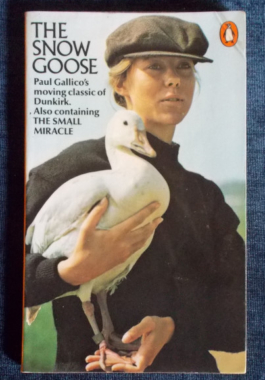
The Snow Goose : A simple parable on the power of friendship and love, set against a backdrop of the horror of war. Philip Rhayader is a disabled artist living a solitary life in an abandoned lighthouse in the marshlands of Essex who meets a young local girl, Fritha, when she brings him a wounded snow goose. They become friends as the bird is nursed back to flight, and it revisits the lighthouse in its migration for several years. Rhayader and his small sailboat take part in the Dunkirk evacuation and the snow goose stays by his small boat, a symbol of luck and survival to the rescued men. The Small Miracle: When his donkey falls ill, a small boy in modern day Assisi goes to Rome seeking permission for the only remedy he truly trusts. Illustrated by Anne Linton.
-
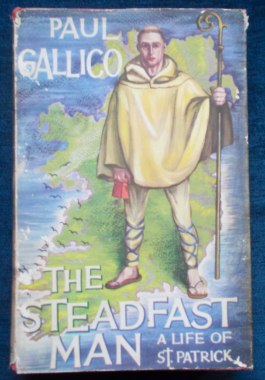 Magonius Sucatus Patricius was a wild, carefree undisciplined Romano-British boy living in south-west Britain toward the end of the fourth century. The legions had been recalled to Rome; Christianity, the official religion of the Empire was in the ascendancy and the Empire itself was breaking apart. When he was sixteen, Patricius visited his family's seaside estate and was carried off by Irish sea raiders to endure six years as a slave, shepherd and swineherd in the pagan wilderness of Northern Ireland . He escaped and after many adventures in France made his way home to Britain. Thirty years later - now a Bishop - Patricius again braved the hostile shores of Ireland to begin the most courageous conversion in the history of Christianity: that of a nation devoted to Celtic Gods and Druidism. Gallico presents the reader with St. Patrick with reason backed with evidence, without recourse to the more dramatic myths that surround him and weaving in excerpts from two extant sources: Confession and Letter to Coroticus to separate fact from legend. A balanced portrait of the extraordinary Saint.
Magonius Sucatus Patricius was a wild, carefree undisciplined Romano-British boy living in south-west Britain toward the end of the fourth century. The legions had been recalled to Rome; Christianity, the official religion of the Empire was in the ascendancy and the Empire itself was breaking apart. When he was sixteen, Patricius visited his family's seaside estate and was carried off by Irish sea raiders to endure six years as a slave, shepherd and swineherd in the pagan wilderness of Northern Ireland . He escaped and after many adventures in France made his way home to Britain. Thirty years later - now a Bishop - Patricius again braved the hostile shores of Ireland to begin the most courageous conversion in the history of Christianity: that of a nation devoted to Celtic Gods and Druidism. Gallico presents the reader with St. Patrick with reason backed with evidence, without recourse to the more dramatic myths that surround him and weaving in excerpts from two extant sources: Confession and Letter to Coroticus to separate fact from legend. A balanced portrait of the extraordinary Saint.

